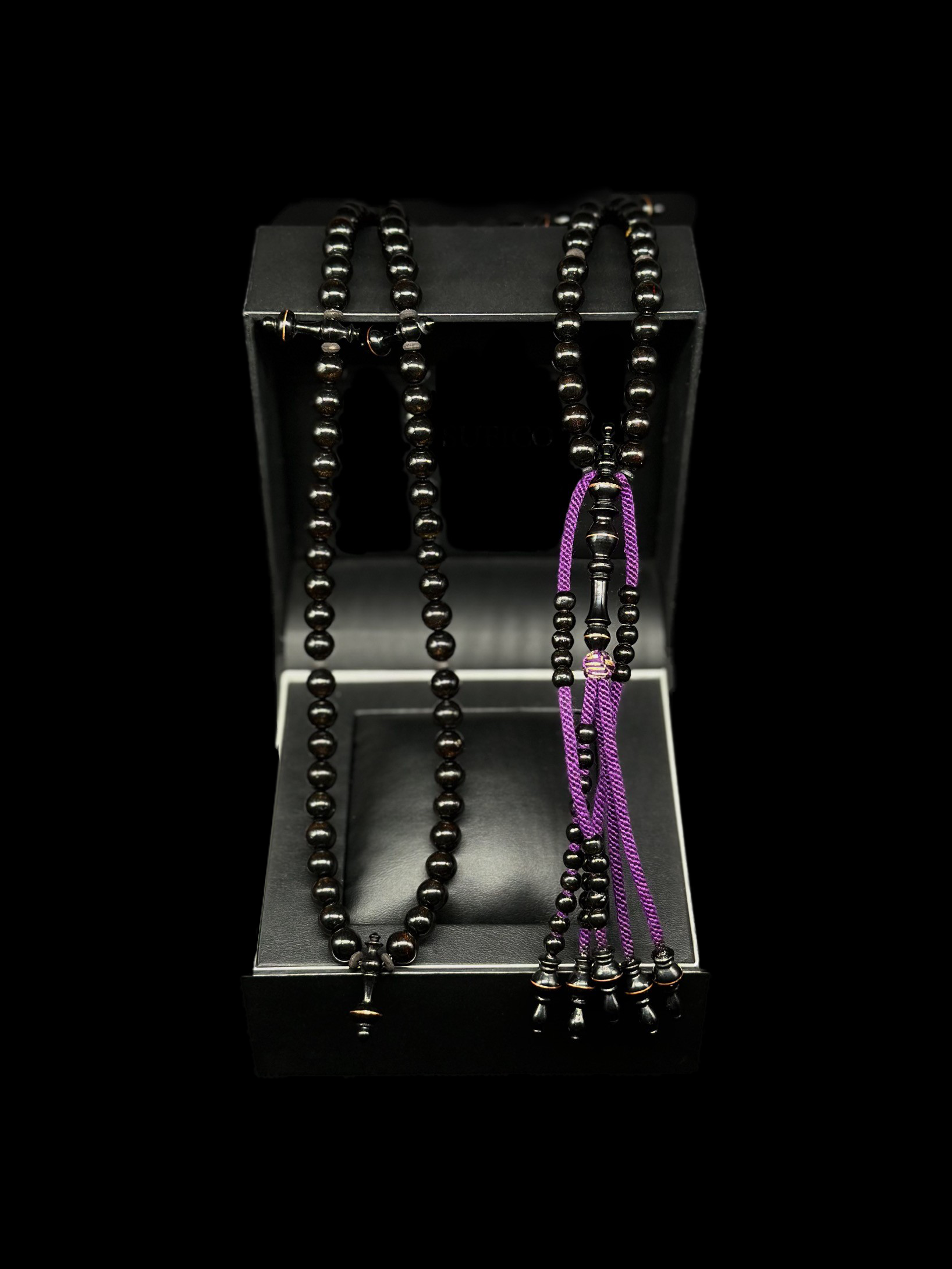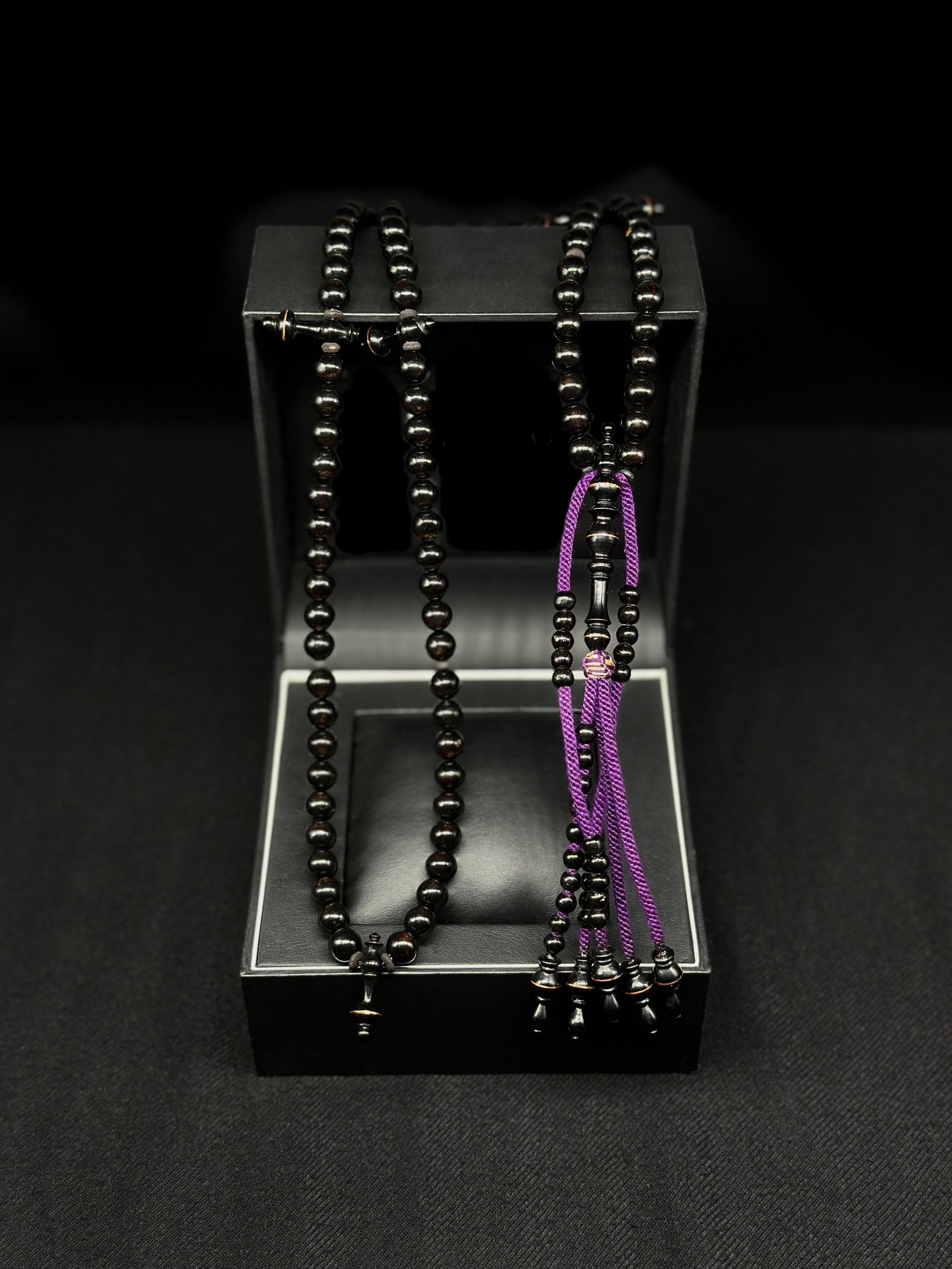

Pure Black Yusr Tasbih
The Material
Yusr, the stone of regeneration.
Origin
Coral, also known as the "Stone of Regeneration & Purification," is among the world's oldest and most revered gemstones, with archaeological evidence tracing its use back tens of thousands of years, particularly in Ancient Egypt. One intriguing origin story of Yusr (Black Coral) comes from Greek mythology: it is said that Yusr was formed from petrified seaweed when the hero Perseus laid Medusa's head before it. As a result, the Greeks wore Yusr as jewelry and a protective talisman both in daily life and during battle.
Its lustrous glass-like finish after polishing has made coral a sought-after material in high-end jewelry. The finest quality of Black Coral Yusr is found in the Mediterranean and Red Seas, with the latter being the source of most of our Yusr. Historically, it was often gifted to young children and pregnant women, valued for its supposed healing properties and protective qualities.
Yusr is believed to enhance spiritual connection, aiding in the transfer of knowledge from spiritual masters. It is also said to promote mental clarity, helping individuals discern the right path and make wise decisions.
The Craft
Stage 1 – The Design:
The intricate design of the prayer beads are envisioned by the craftsman and a rough outline is sketched out onto a blank canvas. It is at this stage where the craftsman selects which materials they wish to utilise.
Stage 2 – Acquisition of the raw materials:
The hunt for the chosen materials begins and the wood is then ethically sourced and harvested from the finest and 100% organic of materials.
Stage 3 – The resize:
Once the material has been sourced it is then cut into smaller blanks and is now ready to begin onto the next stage of the process.
Stage 4 – The carving:
At this stage the beads, minarets, and separator pieces are carved into the desired shape and pattern. It is important to know that this entire method is done by hand; there are no molds, markers or guidelines. This is a skill and art form which requires exquisite hand co-ordination and takes a craftsman many years to learn and perfect.
Stage 5 – Excavating the holes:
Similar to the last stage this is a skill which requires years of practise. There are no markers or guidelines, and if the holes are off by even a fraction of a millimetre the prayer beads will not be aligned correctly. If the holes are too narrow this will result in the beads being stiff and difficult to move along the thread. If the holes are too wide this will result in the beads being extremely loose and difficult to use.
Stage 6 – Unmasking the natural beauty:
The materials are then sanded to bring out the beauty which is hidden deep within the beads. slowly each and every grain is uncovered and is manifested within each bead.
Stage 7 – The set up:
There are currently 3 main set up systems of how prayer beads are separated;
Shadhili – 100 beads separated using 3 dividers in the set up of 33/17/17/33.
Naqshbandi – 200 beads separated using 7 dividers in the set up of 7/11/40/70
Tijani – 100 beads separated using 5 dividers in the set up of 12/18/20.
Stage 8 – The stringing:
The beads are now finally ready to be stringed together using a durable thread. It is at this stage where the thread tension is decided on and with some can even be adjusted afterwards.
Stage 9 – The tassel:
This process takes hours to complete and is crucial in the overall look and design of the prayer beads.
Stage 10 – The inspection:
The set of prayer beads are now ready for one last inspection before they are to be released.
Specification
Bead Count: 100
Bead Size: 8.5mm
Material: Yusr
Choose options



